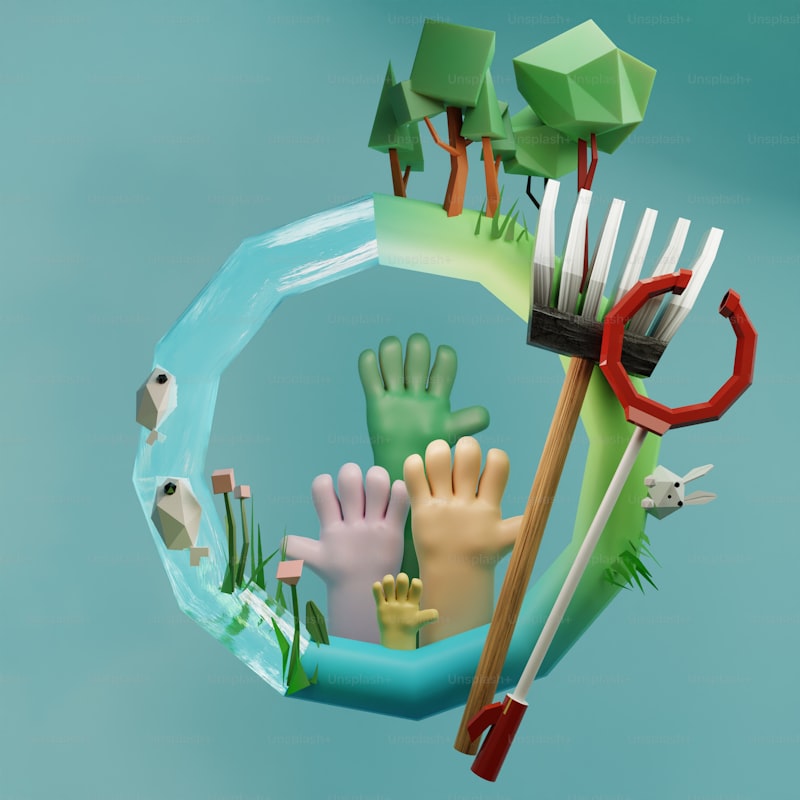Natural resources play a pivotal role in shaping ecosystems worldwide, exerting significant impacts on their health and sustainability. These resources, ranging from water and air to minerals and biodiversity, form the bedrock of ecological balance. The delicate interplay between these elements determines the overall resilience and biodiversity of any given ecosystem.
Water, as one of the most crucial natural resources, serves as the lifeblood of ecosystems. Its availability and quality directly influence the diversity of flora and fauna that can thrive in an area. Regions blessed with ample freshwater resources tend to support more diverse habitats, from lush forests to thriving wetlands, sustaining a wide array of species.
Air quality is another critical factor affected by natural resources. Clean air, free from pollutants, supports the respiratory needs of both terrestrial and aquatic life. Conversely, emissions from human activities, such as industrial processes and transportation, can degrade air quality, impacting the health of ecosystems and the species within them.
Mineral resources contribute to the physical structure of ecosystems, influencing soil composition and fertility. Nutrient-rich soils enable robust plant growth, which forms the foundation of food webs. However, mining activities can disrupt these soils, leading to erosion and loss of habitat for numerous species.
Biodiversity itself is a natural resource, encompassing the variety of life forms on Earth. Ecosystems rich in biodiversity tend to be more resilient to environmental changes and disturbances. Each species plays a unique role in maintaining ecosystem functions, such as pollination, nutrient cycling, and pest control.
The impact of natural resources on ecosystems underscores their intricate relationship with environmental health. Preserving these resources is essential to safeguarding biodiversity and ensuring the sustainability of ecosystems worldwide.
Balancing Act: How Natural Resources Shape Ecosystem Dynamics
Have you ever wondered about the intricate dance of life within our ecosystems? Natural resources play a pivotal role in shaping this delicate balance, influencing everything from biodiversity to climate stability. Let’s delve into how these resources orchestrate the dynamics of our natural world.
Picture a forest: lush greenery, diverse wildlife, and a harmonious interplay of plants and animals. This ecosystem thrives because of its natural resources. Water, sunlight, soil nutrients, and air are fundamental components that sustain life. Each resource has its role – water nourishes plants, sunlight drives photosynthesis, soil nutrients provide essential minerals, and air supports respiration.
But it’s not just about abundance; it’s about balance. Ecosystems achieve stability through intricate feedback loops. For instance, plants absorb carbon dioxide and release oxygen, which regulates atmospheric composition. This balance ensures a suitable habitat for various organisms, from tiny insects to towering trees.
Yet, this harmony is fragile. Human activities often disrupt these delicate ecosystems. Deforestation, pollution, and climate change alter resource availability, leading to biodiversity loss and ecosystem degradation. Imagine a symphony where each instrument represents a species or resource; losing one disrupts the entire composition.
Consider the analogy of a chef preparing a gourmet dish. Each ingredient – fresh herbs, spices, and proteins – contributes to the dish’s flavor and texture. Similarly, in ecosystems, each resource adds a unique element to the overall landscape. Remove one ingredient, and the dish loses its essence; disrupt one resource, and the ecosystem struggles to maintain its balance.
Rhetorical question: How can we preserve this delicate balance? By understanding the intricate connections between natural resources and ecosystem dynamics, we can make informed decisions to conserve and sustain our environment. As stewards of the Earth, it’s our responsibility to ensure that future generations inherit a world where ecosystems flourish in their natural harmony.
From Abundance to Scarcity: Natural Resources’ Ripple Effect on Ecosystem Health
Imagine a pristine forest, alive with diverse species and towering trees that absorb carbon dioxide and release oxygen. This ecosystem thrives on abundant resources like sunlight, water, and nutrients from the soil. Animals depend on this habitat for food and shelter, creating a chain where each species plays a crucial role.
However, human activities often tip this balance. Deforestation, driven by the demand for timber and land, disrupts this ecosystem. Trees that once provided homes for countless species are felled, affecting the entire food web. Without trees to anchor the soil, erosion can occur, washing away fertile land and affecting agricultural productivity downstream.
In the oceans, a similar story unfolds. Marine life depends on nutrient-rich waters and stable temperatures. Overfishing disrupts food chains, leading to declines in fish populations that affect not only marine predators but also communities dependent on seafood for sustenance.
The ripple effect of resource scarcity extends beyond immediate ecosystems. Climate change, exacerbated by the burning of fossil fuels, disrupts weather patterns worldwide. Droughts parch once-fertile lands, affecting crops and communities that rely on agriculture. Rising sea levels threaten coastal habitats, displacing communities and altering entire ecosystems.
Ultimately, the health of ecosystems mirrors our own. Just as our bodies depend on a balanced diet and clean air, ecosystems rely on a stable supply of resources. By understanding these interconnections, we can work towards sustainable practices that preserve natural resources for future generations.
Unveiling the Hidden Costs: Natural Resource Exploitation and Ecosystem Vulnerability

Natural resource exploitation, though often heralded for its economic benefits, carries profound hidden costs that extend far beyond monetary value. Delving into the heart of ecosystems, industries harvest resources such as minerals, timber, and water, impacting environments in ways both seen and unseen.
Imagine a bustling mine extracting precious metals from deep within the earth. While the immediate yield enriches economies and satisfies consumer demands, the process can ravage landscapes, leaving scars that endure for generations. Ecosystems, finely tuned over millennia, face disruption as habitats are fragmented and species displaced. The toll on biodiversity can be irreversible, with fragile ecosystems like rainforests and coral reefs particularly vulnerable.
Moreover, the environmental repercussions extend to climate stability. Deforestation contributes significantly to carbon emissions, while overfishing disrupts marine food chains. These activities not only jeopardize species survival but also diminish natural resilience to climate change, further exacerbating global challenges.
The human toll of resource exploitation is equally profound. Indigenous communities, often stewards of biodiverse regions, bear the brunt of environmental degradation. Their traditional livelihoods and cultural heritage are threatened as pristine landscapes are transformed into industrial zones.
In response to these challenges, conservation efforts and sustainable practices are gaining momentum. From certified forestry practices to marine protected areas, initiatives seek to balance economic interests with environmental stewardship. By safeguarding ecosystems and promoting responsible resource management, we can mitigate the hidden costs of exploitation.


Understanding these complexities is crucial for informed decision-making and policy formulation. By acknowledging the interplay between resource extraction, ecosystem vulnerability, and societal well-being, we pave the way towards a more sustainable future where nature thrives alongside human progress.
Nature’s Lifeline: Exploring the Crucial Role of Natural Resources in Ecosystem Sustainability
Have you ever wondered about the intricate web that sustains life on our planet? Natural resources play a pivotal role in maintaining this delicate balance, ensuring the continuity of ecosystems that support diverse forms of life. From the towering forests to the depths of the oceans, every element of nature contributes to the resilience and sustainability of our planet.
Forests, often referred to as the lungs of the Earth, are one of the most vital natural resources. They not only provide habitats for countless species but also act as carbon sinks, absorbing carbon dioxide from the atmosphere and releasing oxygen. This process helps mitigate climate change and ensures cleaner air for all living beings. Imagine forests as giant air purifiers that work tirelessly day and night, silently contributing to our well-being.
Freshwater sources are another critical natural resource that sustains life on Earth. Rivers, lakes, and groundwater reservoirs not only quench our thirst but also support agriculture, industry, and biodiversity. These bodies of water are not just resources; they are lifelines that communities and ecosystems depend on for survival. Without them, the delicate balance of nature would tilt, affecting everything from food production to climate patterns.
Minerals and metals extracted from the Earth’s crust form another essential category of natural resources. These resources are the building blocks of our infrastructure, from the skyscrapers in urban jungles to the roads that connect communities. However, their extraction and usage must be managed sustainably to prevent environmental degradation and ensure their availability for future generations.
Biodiversity, encompassing the variety of life forms on Earth, is perhaps the most precious natural resource of all. It includes everything from microscopic bacteria to majestic mammals, each playing a unique role in their respective ecosystems. The loss of biodiversity, often caused by human activities such as deforestation and pollution, threatens the stability of entire ecosystems and compromises their ability to provide essential services.
Frequently Asked Questions
How do human activities impact natural resources and ecosystems?
This FAQ answers how human activities affect natural resources and ecosystems. It explores the various ways such activities, like deforestation, pollution, and urbanization, disrupt ecosystems, leading to habitat loss, climate change, and biodiversity decline.
How can sustainable management practices mitigate the negative impact of natural resources on ecosystems?
Learn how sustainable management practices help reduce the harmful effects of using natural resources on ecosystems by promoting responsible resource use, conservation efforts, and ecosystem restoration.
What are natural resources and how do they affect ecosystems?
Natural resources are materials or substances that occur in nature and can be used for economic gain. They include water, minerals, forests, and fossil fuels. These resources impact ecosystems by providing habitats, supporting biodiversity, influencing climate patterns, and serving as essential elements in ecological processes.
What are the consequences of resource depletion on ecosystems?
Learn about the impact of resource depletion on ecosystems, including biodiversity loss, habitat destruction, and disruptions to ecological balance. Understand how these consequences affect the environment’s ability to sustain life and the importance of conservation efforts.
Why is biodiversity crucial for ecosystem health in relation to natural resources?
Learn why biodiversity is essential for ecosystem health and natural resources. Explore how diverse species contribute to ecosystem stability, resilience to environmental changes, and sustainable resource management.



